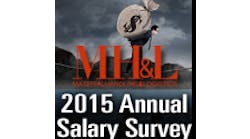ConAgra Foods' Retail Products includes branded packaged foods, which are sold through various retail channels and include products in frozen, refrigerated and shelf-stable temperature classes.
ConAgra Foods' Foodservice Products includes branded and customized food products, including meals, entrees, prepared potatoes, meats, seafood, sauces and a variety of custom-manufactured culinary products packaged for sale to restaurants and other foodservice establishments.
ConAgra Foods' Food Ingredients Products includes branded and commodity food ingredients, including milled grain ingredients, seasonings, blends and flavorings, which are sold to food processors, as well as certain commodity sourcing and merchandising operations.
ConAgra's growing list of acquired brands in the packaged foods business includes International Home Foods, Healthy Choice, Butterball, Orville Redenbacher and Swiss Miss. ConAgra owns some 100 consumer brands, including 27 with annual retail sales of more than $100 million.
Chief editor Tom Andel asked Rick Blasgen about the supply chain management challenges that come along with mergers and acquisitions. The full interview follows.
MHM:
Why are mergers and acquisitions happening so much these days?
Blasgen:
A lot of mergers and acquisitions were driven by customers who consolidated in the '80s and '90s, and then Wal-Mart getting into the food business. Other customers had to consolidate in order to leverage size and scale. Therefore, manufacturers began to consolidate so they did not lose pace with the fact that their customers were consolidating. People were getting bigger and bigger and driving scale and reducing costs. It seems to have slowed of late, but you have all these manufacturers, such as Kraft and Nabisco, Pillsbury and General Mills, Tropicana, Pepsi and Frito Lay, Kellogg's/Kiebler, Unilever/Best Foods. All their supply chains were inwardly focused for years trying to get the synergies out and to become one company again. Some of this is survival. Some of our customers had to do it. Some of it is just reducing waste and redundancy. You eliminate piles of inventory, fragmented transportation equipment, and whenever you have more mass you're more efficient in utilizing transportation equipment.
It's not that much different from when the industry decided to use bar codes. It's just another way to gather information. It's expensive but the technology will improve and the price will come down with volume. It comes down to visibility of inventory and the ability to move information as fast as you can and utilize that information for better decision making.
MHM:
What about software issues?
Blasgen:
Typically you have two supply chains and typically you'll run just one. You decide which locations are best for the total inventory to get into and you typically migrate to one order to cash platform. If the fundamentals of the platform of the acquiring company are such that it's fully integrated with everything else they have and it depends on the other order management systems that you'll migrate to, it's a pretty simple solution. If the acquiring company isn't as proficient as the one they're buying, you could take some functionality from the acquired company and employ that in the core company. But when you're running a big supply chain that's already integrated with the other systems the company has, you may lose a little functionality at one end, but everything that's coming into that company has gained the benefit of that bigger scale.
MHM:
Are there industry-specific considerations to keep in mind?
Blasgen:
In our case, with food products, you have code dates and shelf life, customer-specific requirements you must take into consideration. If you're acquiring a product like foodstuffs that is very much like you have, it's just additive and not a lot of new requirements, but if you acquire something totally different and try to co-mingle it there may be some different requirements you need to bake in.
Managing convenience store channels is different from managing wholesalers or self-distributing retailers. When you look at what the channels of distribution require, there are different nuances with order lead times and cycle times. You take your system and adapt it to what mass merchandisers require vs .what wholesalers, self-distributing retailers and military outlets require.
MHM:
How do you deal with culture issues in mergers and acquisitions?
Blasgen:
That's probably a bigger potential hindrance than anything. You can get the physical aspects worked out, but it can take years for companies that come with rich heritages to become part of one company or one philosophy. A cultural transformation has to happen.
MHM:
What are some of the other major challenges with mergers/acquisitions?
Blasgen:
I think people underestimate the value of people coming together as one. The company that's acquired tends to think it’s losing something, that it’s giving up everything it has built up. That's not necessarily the case. You're just evolving it to something bigger and better. There's a feeling of loss of belonging to something you've built over the years, but there's also the realization that where I'm going might not be a bad place.
MHM:
Do you have a new perspective on mergers/acquisitions now that you're at Conagra?
Blasgen:
We had a lot of independent operating companies and we realized we had to come together as one Conagra, so we're in the process of creating a common infrastructure. We're going to a single order invoice remittance platform, creating a distribution network to combine inventories from all our different product lines so that a customer can take advantage of a single order/single delivery/single invoice, unifying all our business processes to become more efficient for our customer, so a customer no longer needs three trucks.
MHM:
Were you hired to accomplish all that?
Blasgen:
Yes, I grew up in the logistics industry and was part of the integration team when Nabisco and Kraft merged, then was asked to lead the North American supply chain for Kraft. I came to Conagra about a year ago.
MHM:
Is this a growing skill set among supply chain managers?
Blasgen:
That's a good point; there is knowledge in knowing how to integrate and gain synergy and eliminate waste and redundancy and become more efficient. Many of the people we've acquired have gone through this. We have people from Quaker, which was acquired by Pepsi. They understand the pitfalls and how to be successful.
One of the things that happens to companies is that they become inwardly focused because you have this acquisition planned and you have to deliver. You can't take your eye off the ball when it comes to execution. It's not your customer's fault that you merged, so you have to focus on satisfying their needs and improving your service while you're smashing these things together. You have to keep it transparent to the customer and some day you have to let them know that you can now order these products on one order and here's why that's valuable to you. In the meantime when they're getting their consistent streams of inventory and information to them it has to be transparent.

